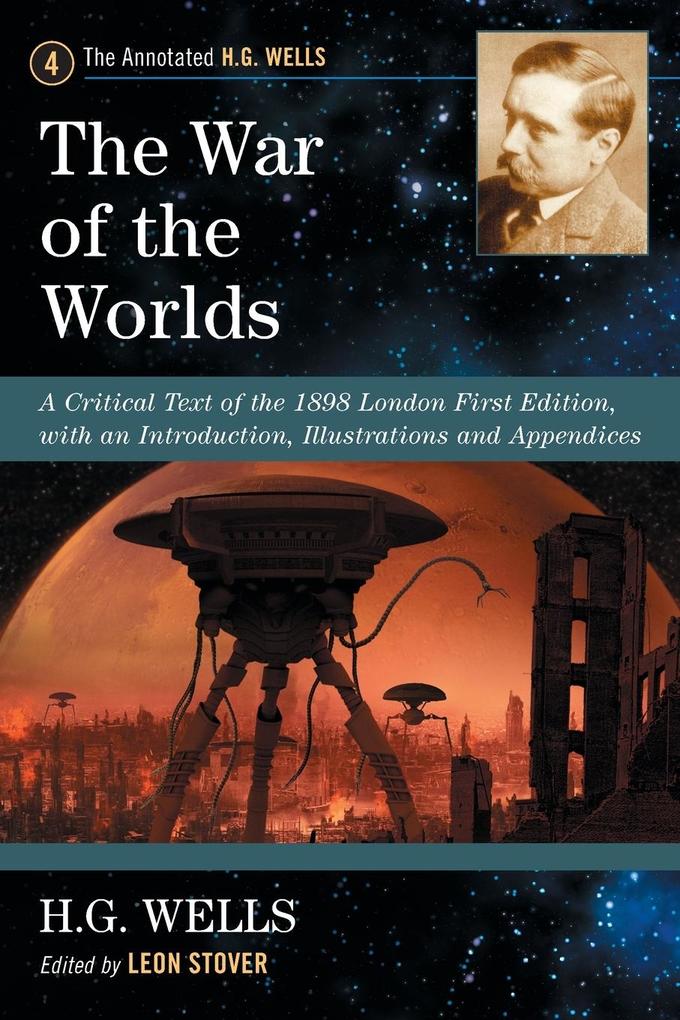
Zustellung: Sa, 10.05. - Mi, 14.05.
Versand in 6 Tagen
VersandkostenfreiWells' novel, a "scientific romance," attained perhaps its greatest fame in another form, the infamous realistic 1939 radio broadcast "Invasion from Mars" by the redoubtable Orson Welles. It was also notably made into an early fifties science fiction adventure movie (and there have been other adaptations as well). So indelible is the association that the novel, like the panic inducing broadcast and the Hollywood flick, now is taken as little more than a light fantasy of outerspace terror and human heroism, far from the author's original vision. The War of the Worlds is a philosophical tale and as such, is profoundly ideological. The world of the Martians represents the progressive future of humanity in a cultural war with our world of tradition and reaction--these are the two worlds in question.
The Mars from which the invaders come is united by a planet-wide system of irrigation canals; for Wells this indicates a socialist world-state. The red planet is red in more than one sense, pointing the direction of terrestrial progress. The Martians in the novel are octopoidal monsters, bodily anticipating the tentacular, all-controlling totalitarian regimes of the twentieth century.
The Mars from which the invaders come is united by a planet-wide system of irrigation canals; for Wells this indicates a socialist world-state. The red planet is red in more than one sense, pointing the direction of terrestrial progress. The Martians in the novel are octopoidal monsters, bodily anticipating the tentacular, all-controlling totalitarian regimes of the twentieth century.
Inhaltsverzeichnis
Table of Contents
Preface
Introduction
1. The Text
2. The Frontispiece
3. Benevolent Catastrophe
4. Socialist Mars
5. Vampire State
The War of the Worlds (1898)
(Annotated text of the first London edition)
Appendices
I. "The Man of the Year Million," by H.G. Wells (1893)
II. "Administrative Areas," by H.G. Wells (1903)
III. "The Philosophy of a Bacteriologist," a Review by H.G. Wells (1903)
IV. Preface to the Atlantic Edition (1924)
V. Excerpt from Philosophical Dialogues, by Ernest Renan (1883)
VI. Excerpt from Mars, by Percival Lowell (1896)
Bibliography
Index
Preface
Introduction
1. The Text
2. The Frontispiece
3. Benevolent Catastrophe
4. Socialist Mars
5. Vampire State
The War of the Worlds (1898)
(Annotated text of the first London edition)
Appendices
I. "The Man of the Year Million," by H.G. Wells (1893)
II. "Administrative Areas," by H.G. Wells (1903)
III. "The Philosophy of a Bacteriologist," a Review by H.G. Wells (1903)
IV. Preface to the Atlantic Edition (1924)
V. Excerpt from Philosophical Dialogues, by Ernest Renan (1883)
VI. Excerpt from Mars, by Percival Lowell (1896)
Bibliography
Index
Produktdetails
Erscheinungsdatum
18. April 2012
Sprache
englisch
Seitenanzahl
336
Reihe
The Annotated H.G. Wells, 4
Autor/Autorin
H. G. Wells
Verlag/Hersteller
Produktart
kartoniert
Gewicht
547 g
Größe (L/B/H)
229/152/20 mm
Sonstiges
Paperback
ISBN
9780786468720
Entdecken Sie mehr
Bewertungen
0 Bewertungen
Es wurden noch keine Bewertungen abgegeben. Schreiben Sie die erste Bewertung zu "The War of the Worlds" und helfen Sie damit anderen bei der Kaufentscheidung.







